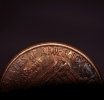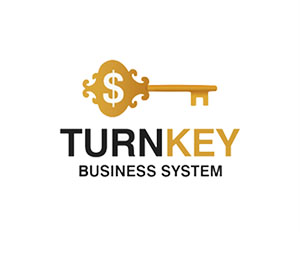Payment Gateways and Quantum Encryption: Protecting Forex Traders’ Deposits from Hackers in 2025

Payment Gateways and Quantum Encryption: Protecting Forex Traders’ Deposits from Hackers in 2025
Payment gateways in the Forex market are undergoing a revolutionary shift toward quantum-resistant security systems in 2025, driven by the growing threat of quantum computing and a new wave of sophisticated hacking attacks.
Quantum encryption and the integration of post-quantum algorithms are emerging as essential shields for traders’ deposits—their safety and privacy are objectively at risk without adopting such innovations.
Quantum encryption and the integration of post-quantum algorithms are emerging as essential shields for traders’ deposits—their safety and privacy are objectively at risk without adopting such innovations.
Definition and Context
Payment gateways act as the digital bridges between traders’ banks, brokers, and financial venues, processing every deposit and withdrawal in the Forex and crypto ecosystems.These endpoints are highly targeted: they face vulnerabilities in outdated protocols, phishing campaigns, vault breaches, and network attacks. With quantum computers on the horizon, legacy standards like TLS and Diffie-Hellman are rapidly losing efficacy—a fact recognized by major financial institutions, including BlackRock and top banks in the US, EU, and Asia.
Quantum encryption—particularly Quantum Key Distribution (QKD)—nerve-centers its protection not on computational complexity but on the immutable laws of physics. In this approach, each “bootstrap” key is either inherently protected by nature (such as a photon’s polarization) or can be immediately revoked if intercepted, since quantum states cannot be measured without being disrupted and detected.
By 2025, NIST-post-quantum standards are already formalized and being adopted within interbank settlement systems through regulatory mandates from the SEC and central banks.

Payment Gateways and Quantum Encryption: Protecting Forex Traders’ Deposits from Hackers in 2025
Why This Matters for Forex Deposits
Forex platform deposits have become a prime target for cybercriminals due to high liquidity and transaction anonymity. The number of “harvest now, decrypt later” attacks—where hackers collect encrypted data now to break it with quantum computers later—has more than doubled between 2024 and 2025, especially targeting BTC, ETH, and interbank routes like SWIFT and SEPA.Notably, in early 2025, hybrid quantum-resistant gateways were credited with defeating advanced phishing and AI-driven DDoS attacks during several high-profile incidents. Major brokers and counterparties, such as Fidelity, BlackRock, Saxo Bank, are embracing post-quantum protocols in their payment gateways, aligning with new global compliance standards for both security and transparency.
How Quantum Encryption Works in Payment Gateways
A modern payment gateway protecting Forex deposits typically leverages three layers:Hardware-based Quantum Random Number Generators (QRNGs) for creating truly unpredictable cryptographic keys.
Protocols such as ML-KEM (CRYSTALS-Kyber) and ML-DSA (CRYSTALS-Dilithium) for secure encapsulation and digital signatures, now formalized as US, EU, and Japan standards for transaction security.
Segmented deposits and biometric multifactor authentication, quantum signatures, and distributed key storage. Even if part of the infrastructure is compromised, the system retains resilience.
In 2025, transitional gateways often operate in hybrid mode: integrating both classic and quantum algorithms, before moving to full migration per fintech industry roadmaps. In practice, each deposit uses a dual-layer encryption (TLS + QKD), and transaction confirmations run across quantum-safe signature chains.
Real-World Use Cases and Examples
London’s largest exchange, in August 2025, launched a public test of its new quantum-encrypted payment gateway for Asian and EU trading accounts, surviving simulated cyber-attacks with a future-proof 10,000-qubit processor.Similarly, the BTQ Quantum Safe Bitcoin network protected $2.4 trillion in assets using ML-DSA algorithms, reportedly maintaining institutional investor confidence against quantum-era hacking threats.
End-to-end Quantum Key Distribution (QKD) for bank-to-gateway and intra-institutional transactions.
Real-time anomaly reaction services—automatic key revocation and certificate rotation in response to any attempted compromise.
Mandatory deposit insurance and quantum-compliant certification audits for all gateways and brokers.
Outlook and Recommendations
Within the next 1-2 years, strong adoption of quantum protocols will become a requirement—not a mere advantage—for brokers and banks handling both retail and institutional Forex deposits globally (US, UK, Switzerland, Singapore).Forex traders in 2025 should demand proof of post-quantum secure gateways; use only audited, insured brokers deploying NIST-certified encryption; favor multifactor authentication; and ensure regular monitoring and token updates.
Conclusion
Payment gateways and quantum encryption now constitute the backbone of Forex trader deposit protection. The year 2025 marks a turning point: only platforms deploying quantum-secure solutions will offer clients real safety—and retain market trust—amid the unfolding quantum threat landscape.
Written by Ethan Blake
Independent researcher, fintech consultant, and market analyst.
October 21, 2025
Join us. Our Telegram: @forexturnkey
All to the point, no ads. A channel that doesn't tire you out, but pumps you up.
Independent researcher, fintech consultant, and market analyst.
October 21, 2025
Join us. Our Telegram: @forexturnkey
All to the point, no ads. A channel that doesn't tire you out, but pumps you up.









Report
My comments